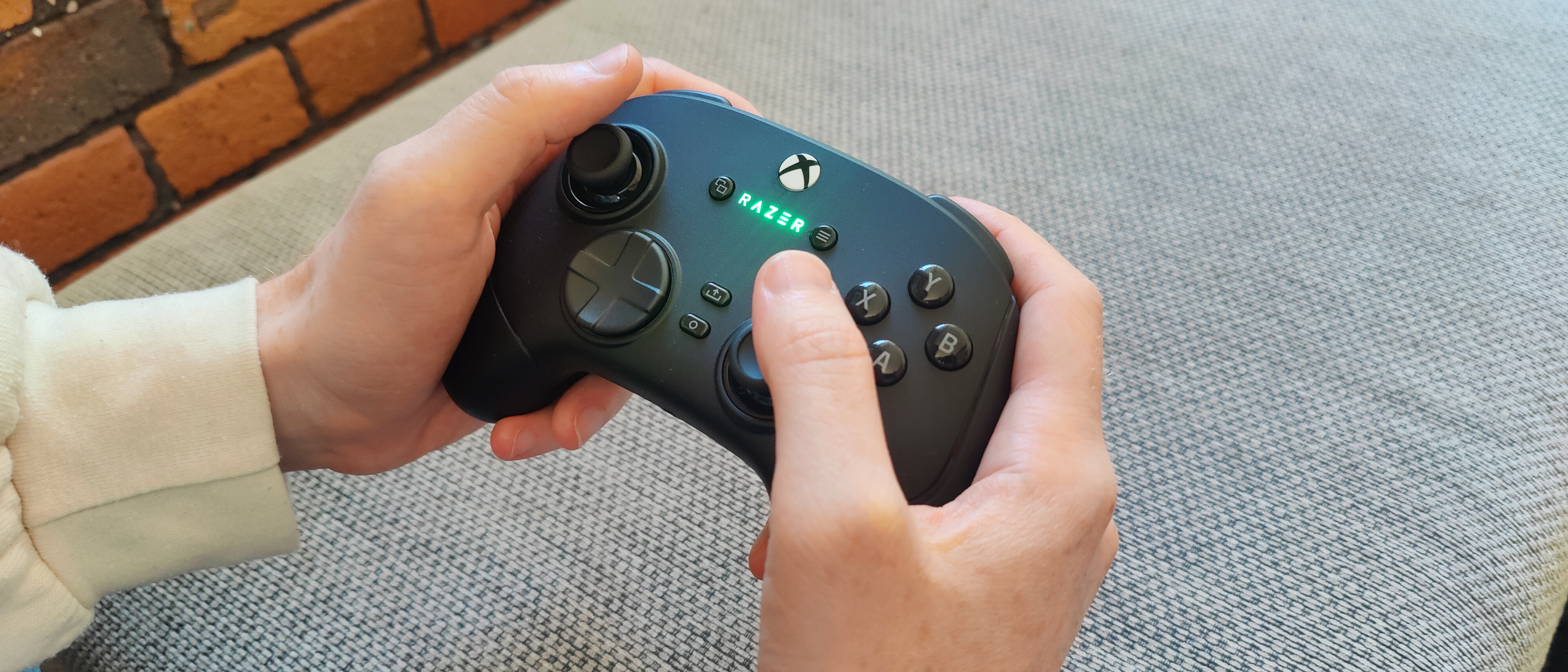Laptop Mag Verdict
The Razer Wolverine V3 Pro is a marvelous controller for serious gamers, featuring fantastic mechanical buttons and mouse click paddles with helpful software, but the price and lack of features may isolate average users.
Pros
- +
Satisfying buttons and triggers
- +
Paddles and trigger locks
- +
Hall effect thumbsticks
- +
Comfortable, ergonomic design
- +
RGB lighting
Cons
- -
No charging dock
- -
Thumbstick swapping feels cheap
Why you can trust Laptop Mag
There are a ton of PC controller options out there these days, and now Razer is throwing another contender into the ring with the Razer Wolverine V3 Pro.
As the V3 in the name suggests, this isn’t the first Wolverine that Razer unleashed onto the world, but it is the first Xbox-style controller in the range. Previous efforts like the Razer Wolverine V2 Pro were made in collaboration with Sony, so it functioned like the PlayStation DualSense controller in terms of button layout, complete with the weird touchpad thing.
Now the two greenest brands in gaming have teamed up to make the Wolverine V3 Pro — an esports-focused premium controller with some impressive features and a staggering price tag. How will it measure up to the best PC gaming controllers out there? That depends on just how sweaty you want to get in your pursuit of esports glory.
Razer Wolverine V3 Pro: Price
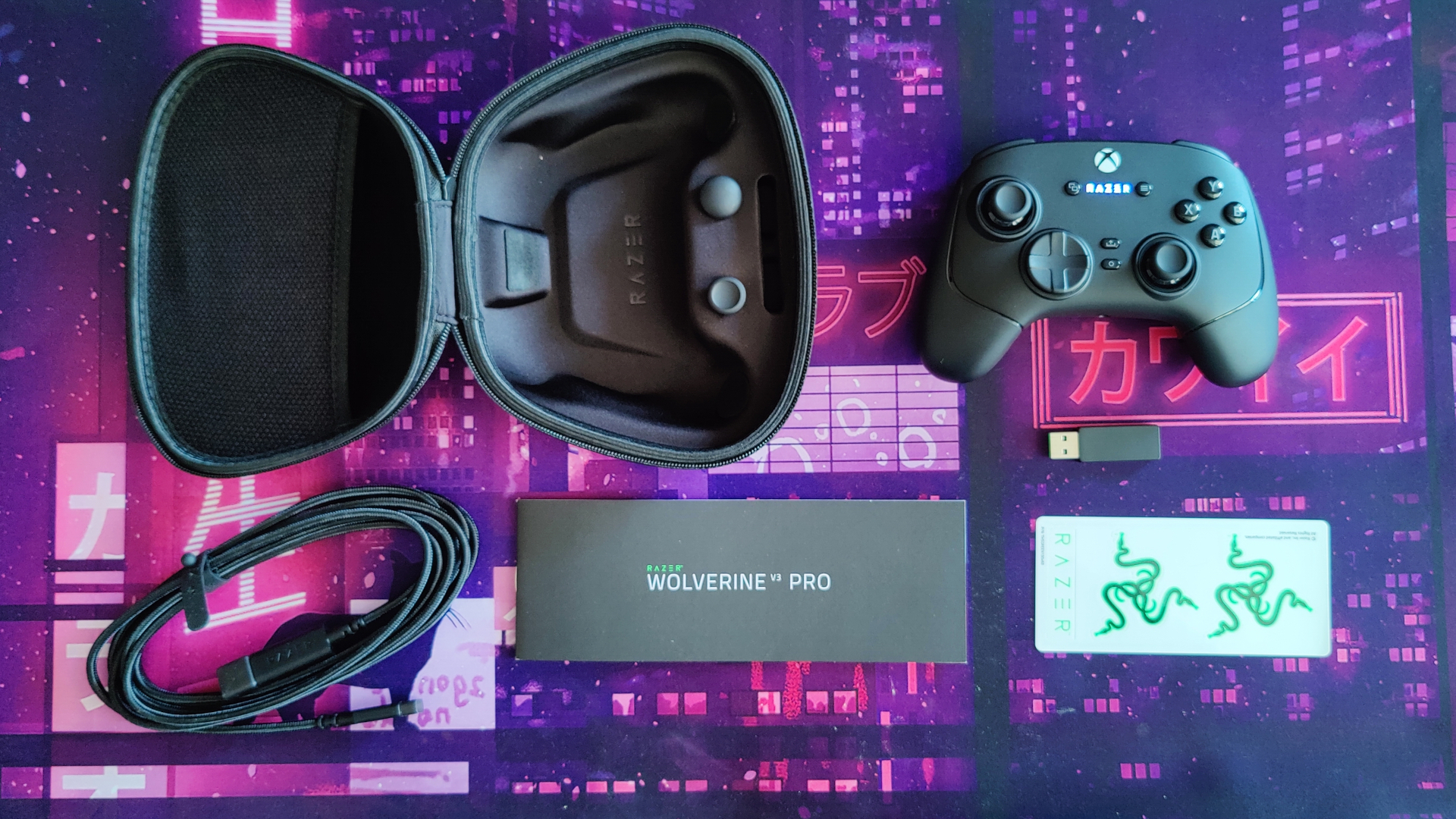
Let’s rip this Band-Aid off straight away — the Razer Wolverine V3 Pro costs $199 / £199. That is a lot of money, even for a "pro" controller. It’s $20 more than the Xbox Elite Controller V2’s MSRP, and realistically it’s $50 more than what you’ll actually pay in stores.
It’s worth noting that there is a much cheaper wired version of the Wolverine Pro V3 Pro called the Razer Wolverine V3 Tournament Edition. Compared to its wireless counterpart, it costs just $99 / £99 and offers all of the same fancy features (minus the pretty RGB Razer symbol). So, if you don’t care about wires, it’s worth considering.
Razer Wolverine V3 Pro: Design
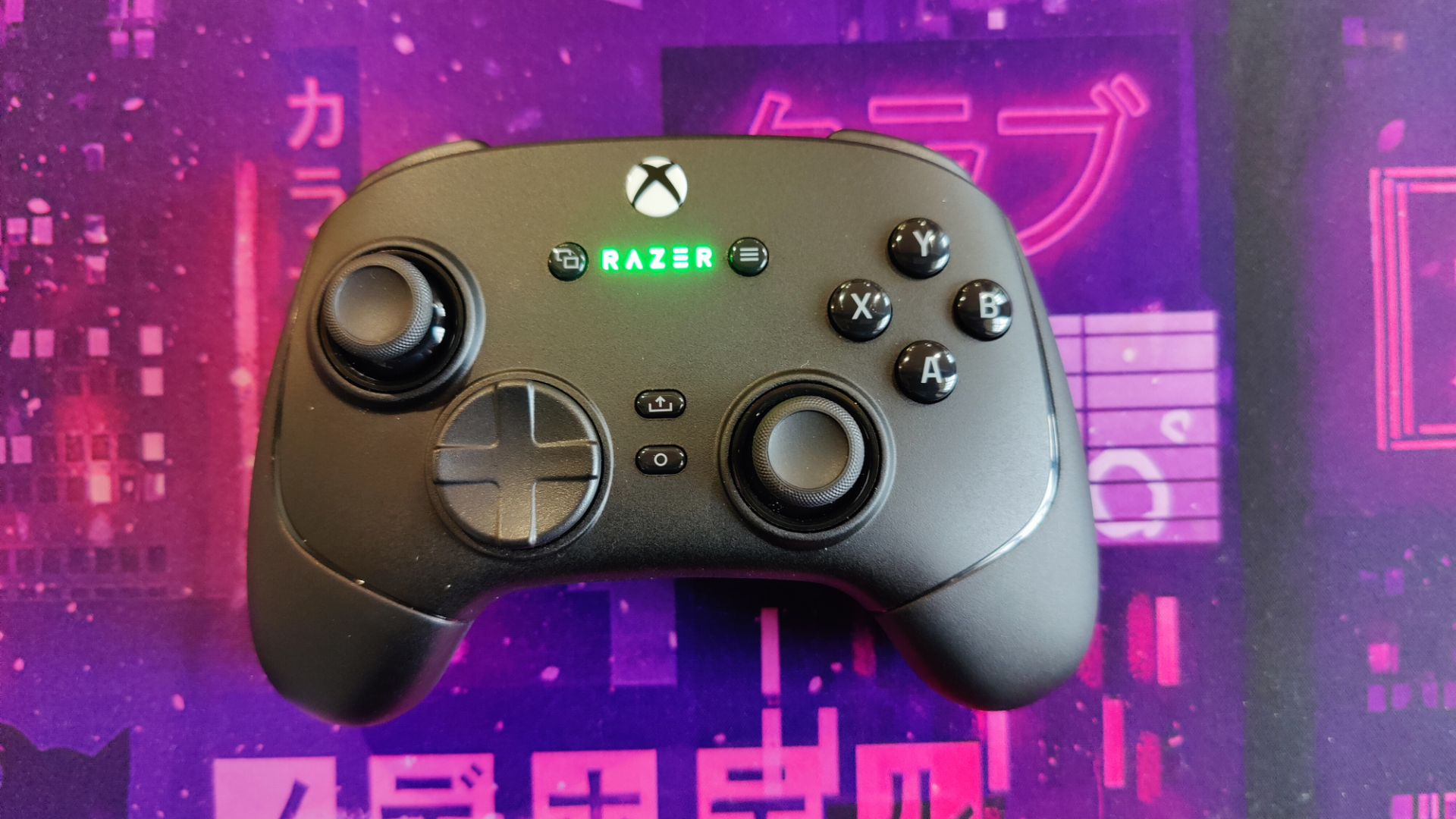
At first glance, the Razer Wolverine V3 Pro could be mistaken for a regular Xbox controller. It maintains the classic shape and offset thumbstick layout. The face buttons are largely the same too, save for an additional function button below the share button. It’s only when you look a little closer that the differences start to appear.
On the top of the Wolverine, alongside the standard left and right trigger and bumper buttons, there are two new buttons, which Razer named the “multi-function claw grip bumpers” (aka the M3 buttons). I’m not sure that name will catch on, but it's an accurate descriptor as they’re designed for players who use the dreaded claw grip. Just below these on the rear side, you’ll find two sliding trigger locks — great for competitive shooters where fast trigger pulls are essential.
The thumbsticks on the face of the controller are removable, with a single convex and long stick option included. However, you get only one of each alternative thumbstick in the box.
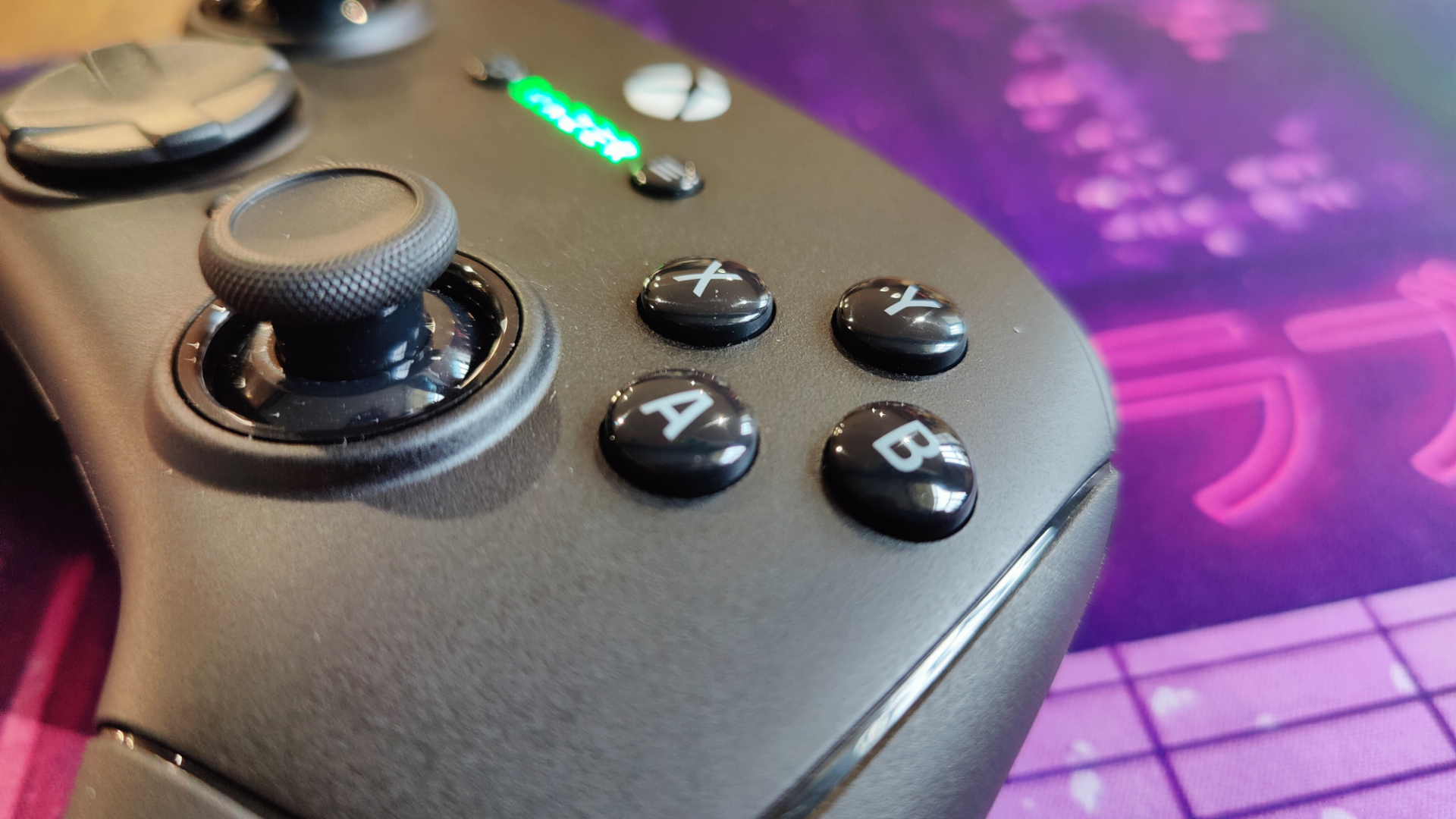
Using a combination of microswitches and rubber membrane, the face buttons have a satisfying mechanical keyboard-esque click and spring back when you press them. The D-pad is the same one they used in the V2, which is a big improvement over the standard Xbox controller. However, it lags behind the interchangeable metal option on the Xbox Elite Controller.
On the rear of the controller, you’ll find another big selling point of the Wolverine V3 Pro: the four mouse click-back paddles. These things are actual mouse-click buttons — the same ones you’ll find on a Razer mouse. Unlike the Xbox Elite Controller, the paddles are permanently attached, but in exchange, you get the low travel time and gratifying “click” feeling you’d get from a gaming mouse.
And let’s not forget the most important feature of all… the RGB Razer logo, which blazes proudly in the center. Can it really be a product for gamers if there isn’t some kind of sweet, sweet RGB lighting involved? It defaults to cycling through a rainbow of colors (you can alter the settings in the app — more on this later); honestly, it looks pretty sick.
Razer Wolverine V3 Pro: Connectivity & software
The Razer Wolverine V3 Pro is a wireless controller, using a special Bluetooth dongle to connect to your PC or Xbox. It’s all plug-and-play, and I found the setup to be a quick and painless affair. Razer is calling this “Hyperspeed Wireless,” which they claim offers a “lag-free, esports-grade performance.” I’ve never noticed any input lag on my wireless controllers before, so I didn’t notice any differences here but this is an area that esports players are concerned about (there’s a reason they all use wired peripherals).
If you’d rather use a physical connection, you can connect via the included 10-foot USB-A to USB-C cable, which is also used to charge the gamepad. While there is a carry case, it does not come with a charging station — another area where the Wolverine lags behind Microsoft’s own premium controller.
There is a standard 3.5mm audio jack port on the underside of the controller, so you can easily hook up one of the best gaming headsets.
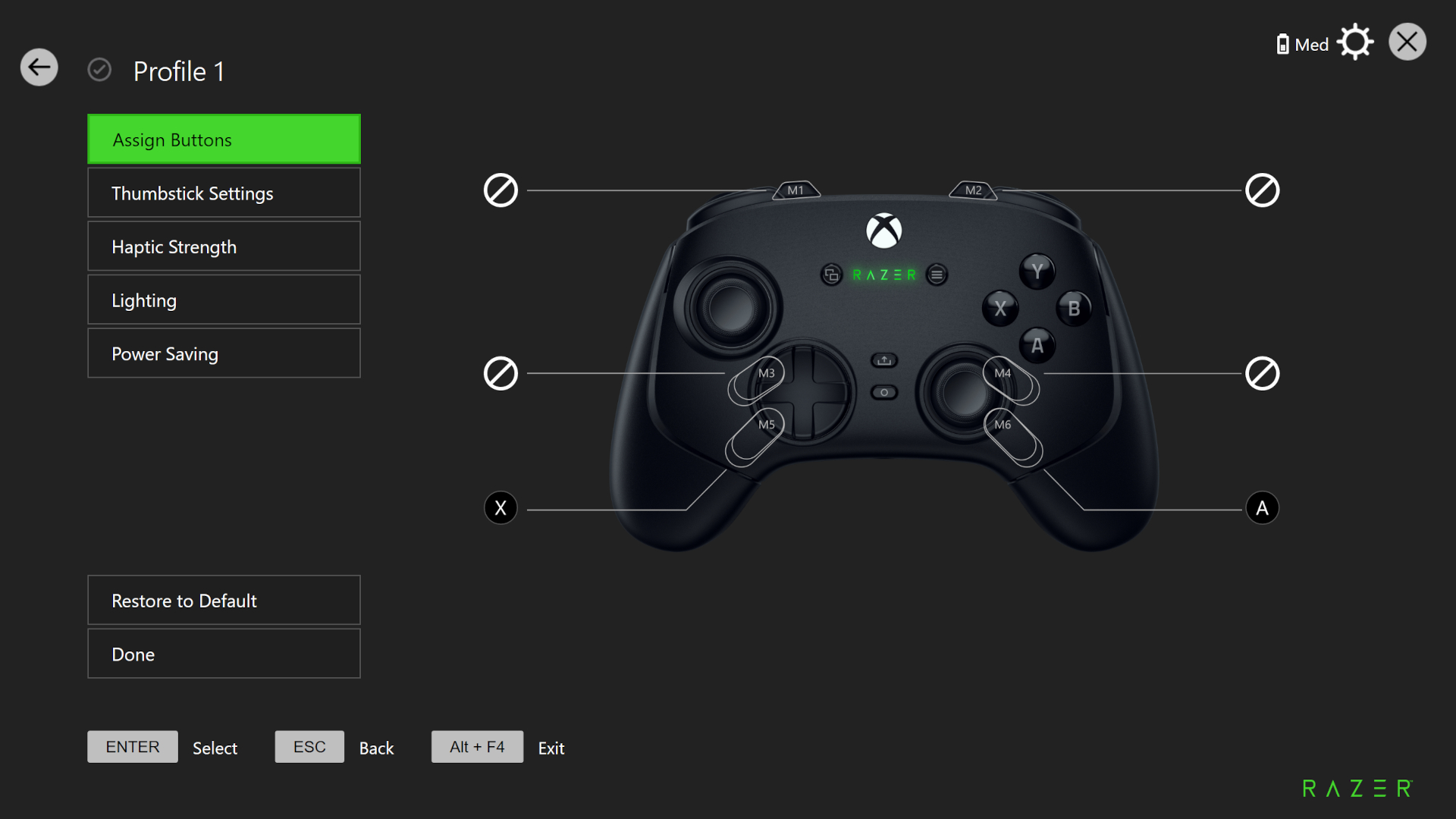
If you want to customize your controller settings, you can use the Razer Controller App which is available for both PC and Xbox. Here you can remap the paddles and shoulder buttons, tweak your thumbstick dead zones, and even alter the RGB lighting on the Razer logo.
You can also set up multiple profiles, in case you want different settings for different games. A nice touch is that you can remap the buttons manually, without using the app. This is done by holding down the function button along with the paddle you want to remap, and then pressing the face button you want it to correspond to.
Razer Wolverine V3 Pro: Performance
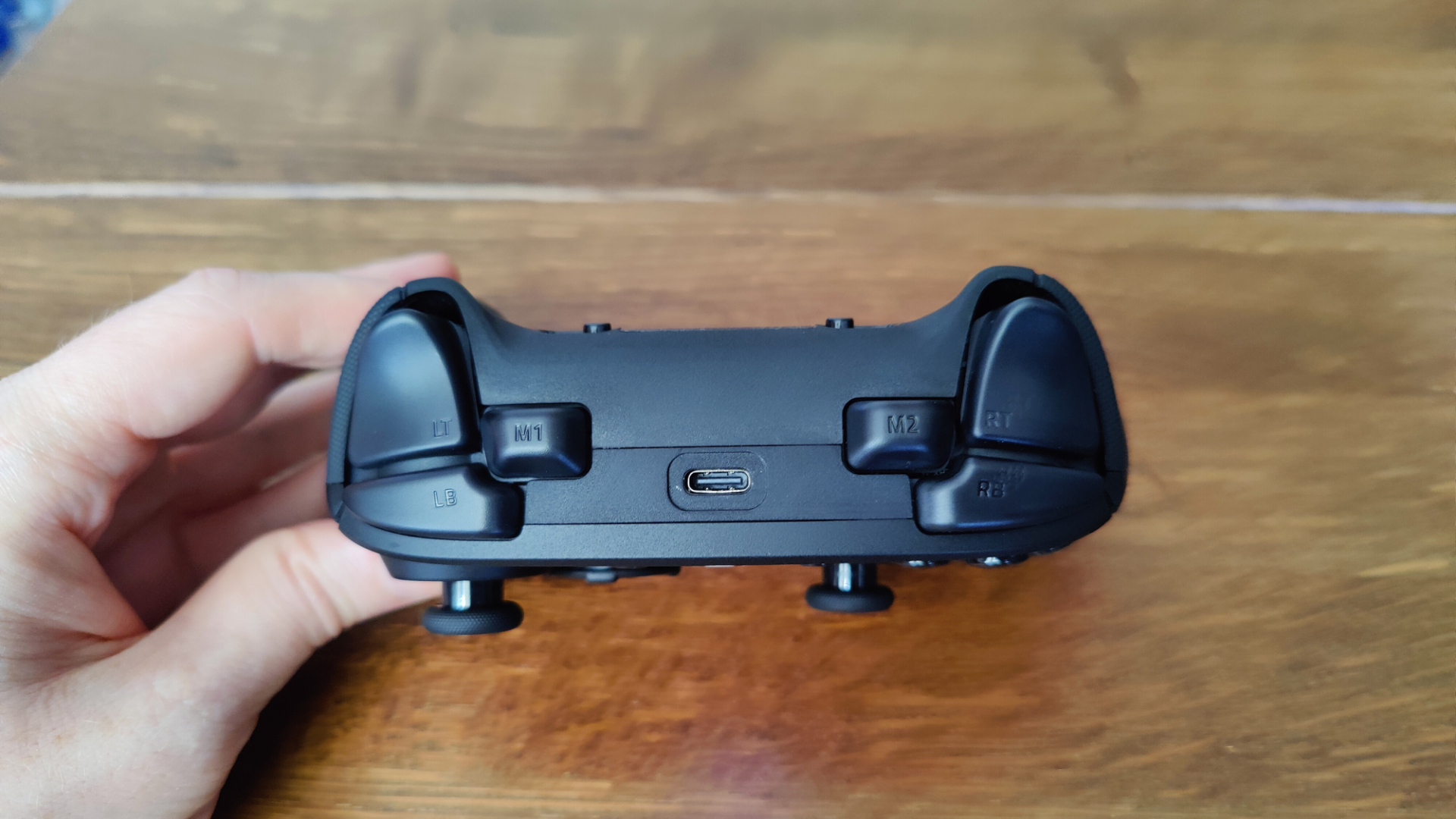
That Pro in the name isn’t just for show — Razer is aiming the Razer Wolverine V3 Pro at professional gamers, and people aspiring to that life.
I’m… not a pro gamer: I was pretty good at Titanfall; I’m a “Platinum for life, never reaching Diamond” in Rainbow Six: Siege. I’m deeply OK at competitive games, is what I’m saying, so I can’t comment on whether the Hyperspeed Wireless is a game changer, or if the ultra-fast actuation of the paddles will make a difference in high-level play.
What I can comment on is how the controller feels after several weeks of daily testing on all kinds of games, from Helldivers 2 and Deep Rock Galactic to Dungeons of Hinterberg and Pathologic 2 (no pro controller can help me there). And I’m happy to say it feels fantastic.
It shares the same general shape as the previous iteration, the Wolverine V2, which itself was heavily inspired by the current Xbox Series X/S Controller. The result is an incredibly comfortable gaming experience. All the paddles are perfectly positioned, sitting just where your fingers naturally rest when you hold the gamepad.
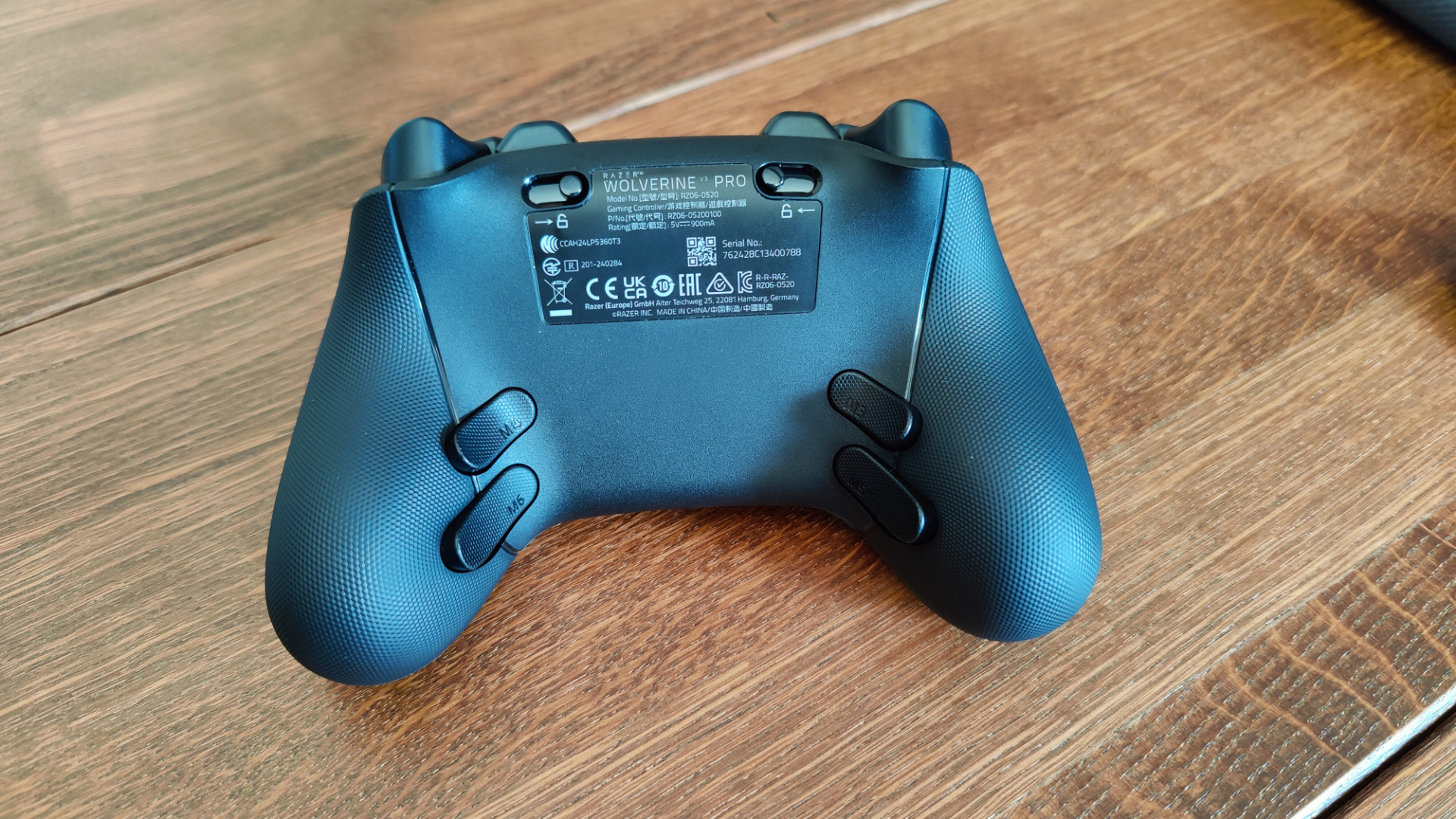
The triggers and buttons feel great too. I love the feedback they give, offering that delightful click and quick bounce back you typically find only with a mechanical keyboard.
I’m also not a claw grip gamer, so I can’t hugely attest to how useful the M3 buttons are… they work, they’re certainly extra buttons that you can press. But the bigger issue is what they represent. Razer is drilling too deep into what the “hardcore esports player who uses a claw grip” would want from a controller. The company neglected to include features that every player would want.
The lack of a charging station is a huge misstep for me. People buy controllers like this because they want to be wireless. Otherwise, they’d buy the Tournament Edition, which is half the price. Since it charges only via USB-C, most people will leave it plugged in a majority of the time.
The paddles are a trade-off that I can understand Razer making at least. They’re not detachable, which took me a while to get used to, but the upside is that they’re more responsive and satisfying to use than traditional clip-on paddles. Just be careful resting the controller on your leg, because you will press all the buttons!
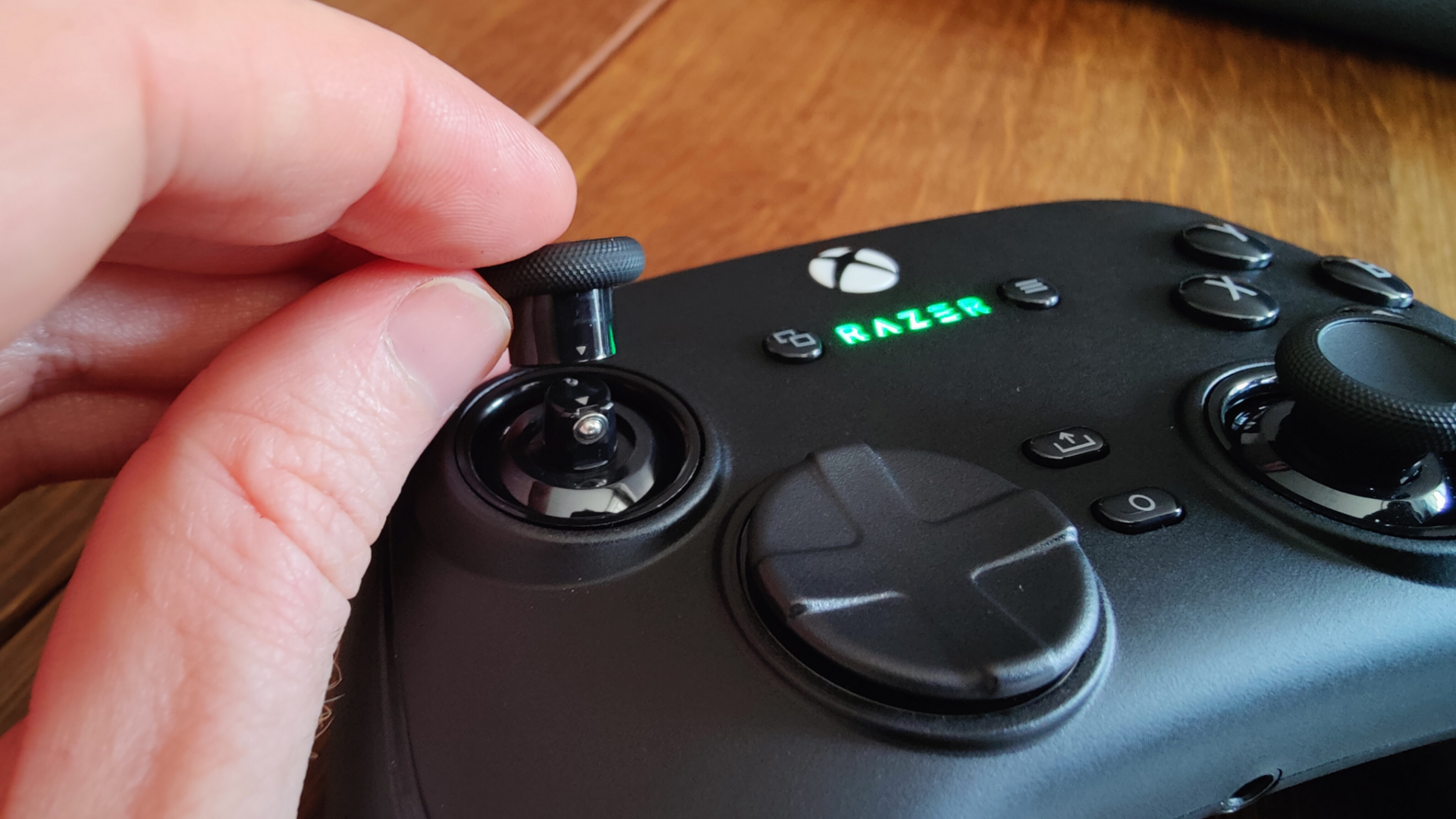
Another niggling issue for me is the thumbsticks; they are slick in motion, no issues there, but they don’t feel great to swap out. The Xbox Elite Controller uses magnets, so the thumbsticks snap into place with little effort. On the Wolverine V3 Pro, you need to line up a little notch on the stick and manually press it into place. It’s a small complaint, but on a controller that costs $200, it’s a rather cheap feeling solution.
Presumably, the reason they don’t use magnets to attach is because they’d interfere with the Hall Effect technology that Razer is using to prevent stick drift in the Wolverine V3. Stick drift isn’t the kind of issue that crops up in a few weeks, so only time will tell how well the thumbsticks will resist drift. To Razer’s credit, the thumbsticks feel great in motion and I had no issues with inaccuracy during testing.
Bottom line
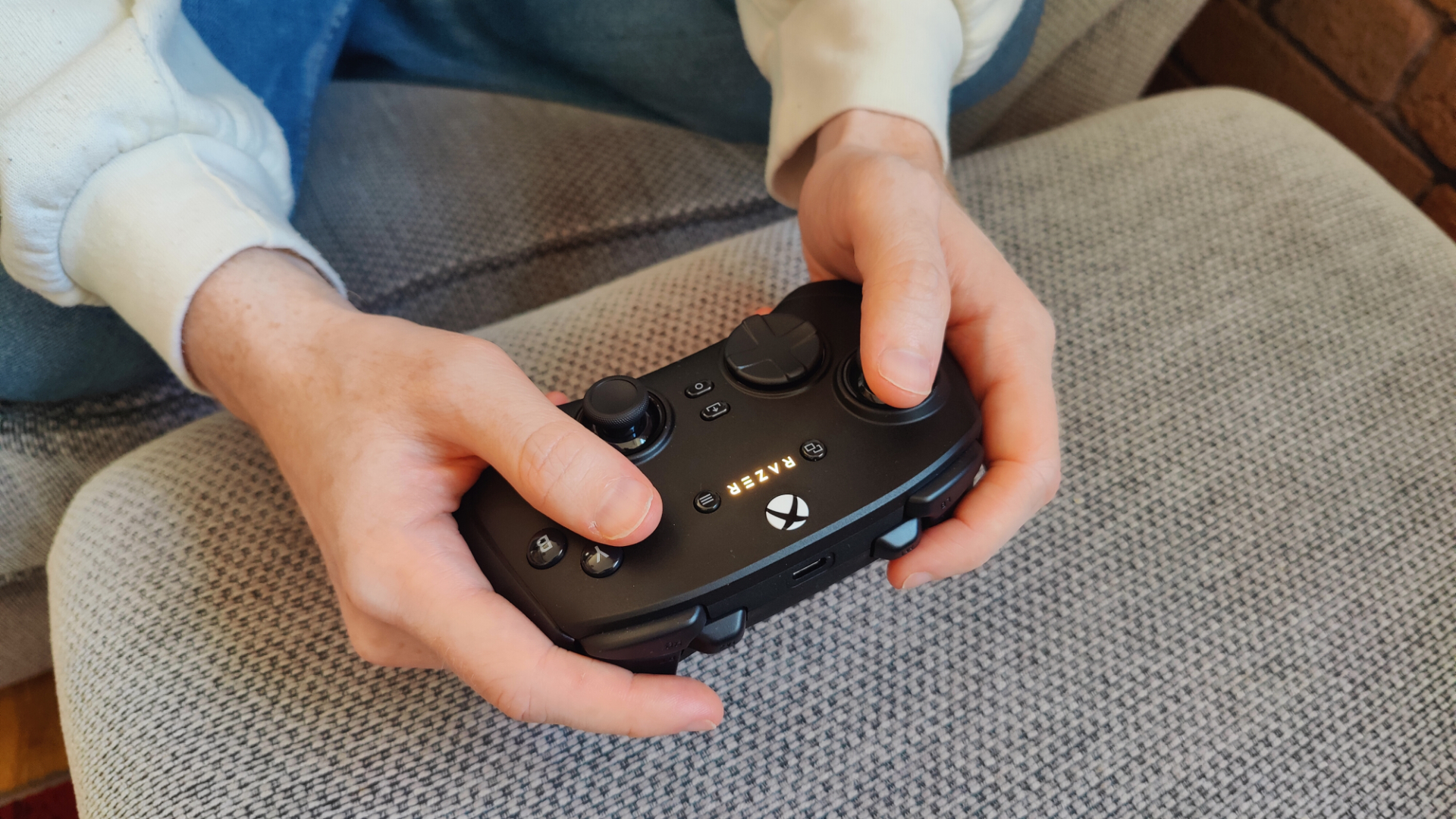
I really like the Razer Wolverine V3 Pro. It’s comfortable in the hand and the buttons offer the most pleasurable clicks of any controller I’ve ever used. A lot of the upgrades over normal controllers are quite niche, and not things that most people would notice but high-end gamers will be very thankful for.
The end result is a controller that’s undoubtedly amazing for highly competitive players, but probably not worth it for the average gamer. Unless you’re actively pursuing console/controller-based esports glory, the Xbox Elite Controller is a better option. You’ll appreciate the removable paddles and charging dock a lot more than you’ll ever notice the Hall Effect thumbsticks or Hyperspeed Wireless connection of the Wolverine V3 Pro.
But if you are an elite-level controller gamer, then this gamepad is easy to recommend. If the price is a bit steep for you, and you don't mind getting a wired gamepad, I’d recommend looking at the much cheaper Tournament Edition.

Ian is a UK-based technology, science, and entertainment writer. As a massive nerd, you’ll find him writing about everything from laptops and VR headsets to Star Wars, video games, and Lego.
